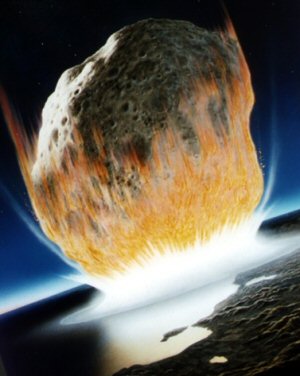True or False? Presenting Scientific Data Without Evidence
Over the course of Earth’s history there have been many mass extinctions. After each one there is the devastation of a world rid of many forms of life. Barren and bleak, it must be a hard place to live. Nevertheless, each mass extinction allows space for new life to grow and develop, such as dinosaurs and humans. The uprisings, life spans and demises of several creatures have been well documented by scientists throughout history.
It is well known that mass extinctions do occur, but their exact mechanism is often unknown, or speculated at best. For example, one of history’s greatest mysteries is what caused the massive Permian-Triassic extinction. Caused by a large volcano eruption or a meteor strike resulting in a severe lack of oxygen in the atmosphere and ocean, this extinction is estimated to have killed 85% of all living organisms on the planet. However, a recent Vancouver Sun article cites rising ocean acidity levels as the culprit for the P-T extinction, not a lack of oxygen.

A large meteor strike is one of the possible causes of the Permian-Triassic extinction.
While this article raises interesting points, there is a complete lack of evidence for the ocean acidity hypothesis. As scientists it is important to remember that we haven’t found out everything there is to know about the world, and that new discoveries are being made on a daily basis. However, each new discovery needs to have accompanying evidence to confirm the finding. While most scientists are aware of this, and are wary of research presented without evidence, members of the public may not be so cognizant. Thus, when new information is presented without evidence it can be misleading to people outside the scientific community. It is therefore important that as scholars we communicate clearly with both the public and the media who will be translating our information. This will ensure that there is no room for misinterpretation or deceptive statements. By keeping the language we use to communicate science clear and simple, it will make it easier to convey our ideas to the general public and thereby bolster an interest in the field.
September 20th, 2011 at 8:36 am
I’m curious to know how strong the evidence is/was for the oxygen hypothesis. Are both hypotheses based on the same simulations?
September 22nd, 2011 at 9:00 pm
This post brings up a really good point. The news media have to be careful that when they present scientific information, they provide enough context. Like you say, each new bit of information is just a small part of our overall understanding of the way things work. Too often, science is portrayed as “one new study = fact”. To be fair, the Sun article did only say that the research “points to” ocean acidification. It would be interesting to compare the language in the news report and the original paper.
p.s. the link to the article seems to be broken…
September 24th, 2011 at 1:17 pm
Oh, media. How you manage to sensationalize things. I can see why the newspapers had to condense the information (limited amount of space to run the article in, being aimed towards general public instead of the scientific community, readers wanting instant gratification rather than a long-winded introduction that they’ll skip over, and the like). However, they still do need to expand on that a bit more, or at least point readers towards further information.
Sometimes, it is necessary to simplify some concepts before the information being shared is ready for consumption by the general public, but not including some basic examples is definitely not best practices. Perhaps the investigations that the researchers did was too complex to come up with a short and concise summary of the evidence?